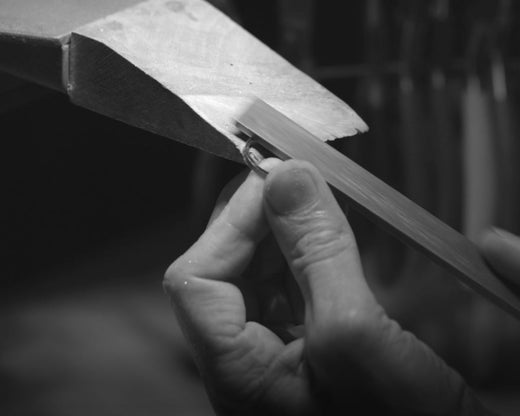Here at Rocks we love all precious metals but our aim is to find the perfect one for you! Rocks feel it is important for you to be informed about the different precious metals, their unique qualities and their benefits when compared with each, in order to make the perfect decision when purchasing jewellery or the all-important engagement and wedding rings.
Platinum:
Platinum is a rare and natural white precious metal that is known for its strength and purity and will keep any diamond or gemstone protected. Its finish can range from a bright polish to a soft matte texture.
Platinum Jewellery marked with Pt or Plat, mean that it contains at least 95% pure platinum and where it is marked iridplat, it contains 90% platinum and 10% iridium. Platinum content is shown as 999 for 99.9% pure platinum, 950 for 95%, 900 for 90%, 850 for 85%, and so on.
Platinum’s is ideal for wearing every day due to its durability, as there is very little metal loss form wear and tear. Over time patina platinum develops naturally, however the shine can be restored with regular polishing. Platinum’s purity makes it hypoallergenic and is the perfect choice for those with sensitive skin.
White Gold:
White gold has become extremely popular in recent years.
White gold gets its colour by mixing yellow gold with alloys like nickel, zinc, and palladium. Due to the variety of the alloys used, white gold colours will vary. Sometimes, white gold is covered with rhodium plating to create a bright, pure white finish.
White gold is available up to 21 karat. Eighteen-karat gold is 75% pure, 14k is 58.5% pure, and 10k 41.7% pure.
White gold is a more affordable and durable than alternative precious white metals and does not tarnish like silver. However, over time some rhodium-plated white gold can yellow and may require to be replated with rhodium.
White metals provide an excellent setting for diamonds, so choose white gold for your diamond ring if you would like platinum but perhaps want something more traditional.
Yellow Gold:
Pure yellow gold is extremely soft, it is too soft to be used in jewellery on its own, therefore, it is combined with copper, zinc and nickel to make it stronger and harder-wearing.
Gold is also one of the most malleable of all the metals, which means that it is perfect for crafting into interesting designs without putting too much stress on the metal.
Pure gold is referred to as 24K gold. Much of our jewellery collection is manufactured from 18K gold which is 75% gold and 25% metal alloys. 14K gold is made up of 58.3% gold and 41.7% other metals to give it extra strength.
Yellow gold is available in different tones and the exact yellow hue depends on the type of metal alloys and the percentage of each alloy being used. Pure gold is a rich, shining yellow. 18K gold is also an intense yellow, 14K gold may be a little muted in tone compared to 18K or 24K. This is due to the to the higher percentages of metal alloys diluting the brilliant gold colour.





